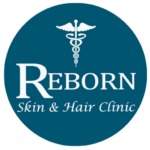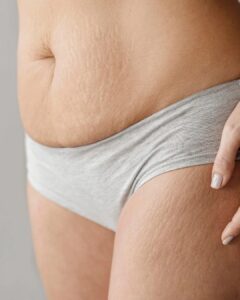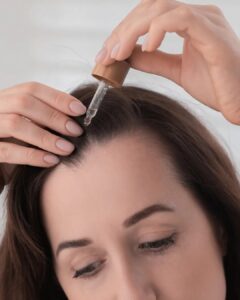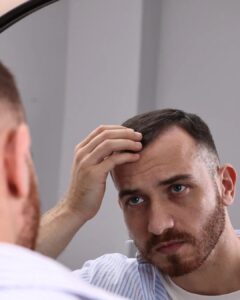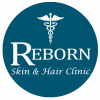Can Stretch Marks Really Be Removed Permanently?
Stretch marks are thin, long lines that appear on the skin when it stretches or shrinks too quickly.
This sudden change causes the collagen and elastin fibers that support your skin to break, leading to streak-like marks that can appear on the abdomen, thighs, hips, chest, or arms. They’re especially common during pregnancy, puberty, rapid weight changes, or muscle growth.
Now, the big question: can stretch marks be removed permanently?
According to dermatologists, complete removal is not usually possible, but significant improvement is achievable with the right treatments.
Modern dermatology has advanced enough to fade stretch marks up to 80–90%, making them barely visible over time. The key is consistency and choosing the right combination of professional treatments, creams, and home care.
Stretch marks often start as reddish or purple lines (when they’re new) and gradually turn white or silvery (as they mature). Early intervention usually gives better results, as newer marks respond more effectively to treatments like laser therapy or microneedling.
In this blog, we’ll explore the most effective methods to reduce or nearly remove stretch marks, from clinical options like laser and microneedling to natural remedies and topical solutions such as oils and creams.
You’ll also learn what works best during pregnancy, safe home remedies, and dermatologist-recommended routines for long-term results.
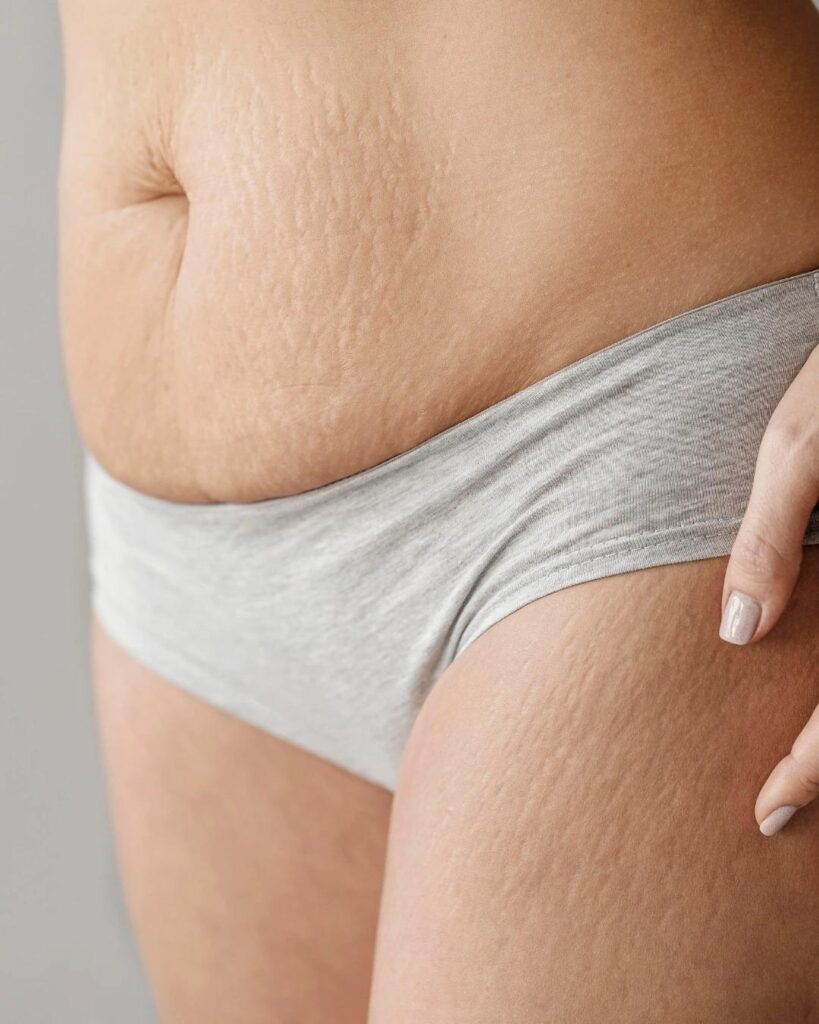
Medical & Advanced Treatments for Permanent Stretch Mark Removal
Medical and advanced treatments are the most effective way to reduce or nearly remove stretch marks. These treatments work by stimulating the skin’s natural healing process, boosting collagen, and encouraging new, healthy skin growth.
Laser Treatment for Stretch Marks
Laser therapy is one of the most popular clinical solutions for stretch marks. It works by stimulating collagen production in the deeper layers of the skin, which helps to repair the damaged tissue and smooth out the marks.
- Sessions Needed: Typically, 3–6 sessions are recommended, depending on the severity and age of the stretch marks.
- Cost Range: Laser treatment can range from ₹5,000 to ₹20,000 per session in India.
- Recovery Time: Minimal downtime, with some redness or mild swelling for 1–2 days.
Patients often notice significant improvement in color and texture, and before-and-after images show visibly smoother, less noticeable marks.
Microneedling for Stretch Marks
Microneedling, also called collagen induction therapy, involves using tiny needles to create micro-injuries on the skin. This triggers the body’s natural healing process, producing collagen and elastin to repair the skin and reduce the appearance of stretch marks.
- At-Home vs Clinic: At-home rollers are less effective and only suitable for mild marks, while professional microneedling offers deeper penetration and faster results.
- Results: Most patients notice improved skin texture and reduced stretch mark visibility after 3–4 clinic sessions. Before-and-after comparisons show smoother skin and lighter marks.
Scar Removal Surgery & Professional Options
In rare cases, surgical options may be considered for very deep or old stretch marks that do not respond to other treatments. This usually involves excision or skin grafting to remove the affected area.
- Comparison: Surgery provides immediate results but is invasive, whereas laser and microneedling are non-invasive, safer, and have minimal downtime.
- Dermatologists usually recommend surgery only when marks are severe or extensive and other treatments haven’t worked.
These medical and advanced treatments provide the fastest and most noticeable improvement in stretch marks. In the next section, we’ll explore topical solutions and oils that complement these treatments or work as standalone options for milder marks.
Effective Topical Solutions: Creams & Oils That Work
For mild to moderate stretch marks, topical creams and oils can help improve skin texture, hydration, and elasticity. Dermatologists often recommend these as part of a daily routine, either alone for newer marks or alongside clinical treatments for better results.
When choosing products, look for active ingredients that support skin repair and collagen production:
- Retinol: Helps stimulate collagen and improve skin texture.
- Hyaluronic Acid: Hydrates and plumps the skin, making marks less noticeable.
- Peptides: Promote skin repair and elasticity.
- Vitamin E: Nourishes the skin and supports healing.
Olive Oil for Stretch Marks
Olive oil is a natural remedy known for its moisturizing and antioxidant properties. Regular massage with olive oil can help improve skin hydration and elasticity, which may reduce the appearance of stretch marks over time.
- How to Use: Gently massage onto affected areas twice daily.
- Realistic Results: Olive oil works best on newer, reddish marks and primarily helps prevent further damage rather than completely remove deep, old stretch marks.
Vitamin E Oil for Stretch Marks
Vitamin E oil is widely used for its skin-repairing and moisturizing properties. It supports collagen production and helps keep the skin soft and supple.
- How it Helps: Hydrates the skin and can improve the appearance of stretch marks, especially when used consistently.
- Effectiveness: While vitamin E may help fade existing marks, it is more effective at preventing new stretch marks when the skin is under stress from growth, pregnancy, or weight changes.
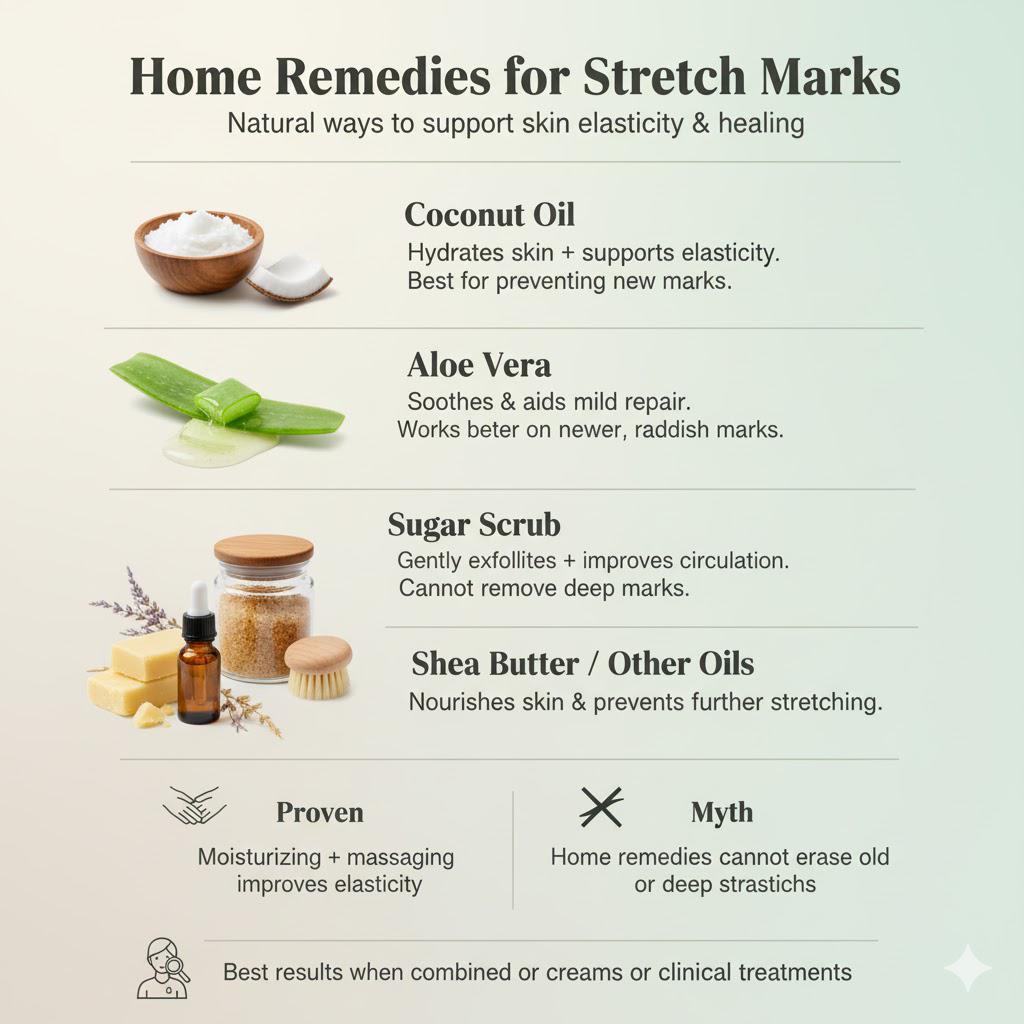
Home Remedies for Stretch Marks
Many people turn to home remedies to reduce stretch marks because they are affordable, natural, and easy to incorporate into daily routines. Common options include coconut oil, aloe vera, sugar scrubs, shea butter, and other plant-based oils.
- Coconut Oil: Rich in fatty acids and antioxidants, it hydrates the skin and may improve elasticity, helping prevent new stretch marks. However, it has limited effect on old, white marks.
- Aloe Vera: Known for its soothing and healing properties, aloe vera can calm irritated skin and support mild skin repair. It works best on new, reddish stretch marks.
- Sugar Scrub: Acts as a gentle exfoliant, helping to remove dead skin cells and improve blood circulation. While it may make the skin feel smoother, it cannot remove deep stretch marks.
- Shea Butter & Other Oils: These nourish and moisturize the skin, improving elasticity and preventing further stretching.
Scientifically Proven vs. Myth
- Proven: Moisturizing and massaging can support skin elasticity and prevent worsening of marks.
- Myth: No home remedy can completely erase deep or old stretch marks. Natural remedies are most effective for prevention and lightening newer marks, rather than permanent removal.
Home remedies are a safe, supportive approach and work best when combined with other treatments like creams, oils, or clinical procedures for more visible results.
Stretch Marks During Pregnancy: Safe & Effective Treatments
Stretch marks are extremely common during pregnancy due to rapid belly growth and hormonal changes. As the skin stretches to accommodate the growing baby, the collagen and elastin fibers can break, leaving reddish or purple marks on the abdomen, breasts, hips, and thighs.
Safe Options During Pregnancy
Expectant mothers need to be careful with treatments, as some active ingredients like retinol or strong chemical peels are not recommended. Safe options include:
- Natural Oils: Coconut oil, olive oil, and almond oil can keep the skin hydrated and improve elasticity.
- Gentle Creams: Products containing hyaluronic acid or centella asiatica are safe and help nourish and soothe the skin.
- Regular Massage: Light massage with oils or creams can support blood circulation and prevent severe stretch marks.
Postpartum Treatments
After delivery, more intensive treatments can be considered if stretch marks persist:
- Laser Therapy: Helps stimulate collagen and reduce the appearance of marks.
- Microneedling: Encourages skin repair and improves texture.
- These treatments are safe to start after pregnancy and breastfeeding, once the skin has recovered.
By combining safe prenatal care with postpartum clinical treatments, new mothers can significantly improve the appearance of stretch marks while protecting both their skin and their baby.
How to Prevent Stretch Marks in the Future
While genetics and rapid body changes play a role, there are several practical steps to minimize the risk of developing stretch marks:
- Stay Hydrated: Drinking plenty of water keeps the skin plump and elastic, making it more resilient to stretching.
- Maintain Balanced Nutrition: Foods rich in vitamin C, zinc, and collagen support skin strength and repair. Adequate protein intake also helps maintain healthy skin.
- Gradual Weight Changes: Avoid rapid weight gain or loss. Steady changes reduce stress on the skin, lowering the likelihood of tears.
- Regular Moisturization: Applying creams, oils, or natural butters daily keeps the skin soft, supple, and stretch-resistant.
- Gentle Exfoliation: Light exfoliation a few times a week removes dead skin cells and promotes better absorption of moisturizing products, supporting healthier skin over time.
Reducing Stretch Marks Safely and Effectively
Removing stretch marks completely can be challenging, but significant improvement is achievable with the right approach.
The most effective strategy combines professional treatments like laser therapy and microneedling with consistent home care using creams, oils, and natural remedies.
- For new or mild marks: Topical solutions such as vitamin E oil, olive oil, or dermatologically tested creams can help lighten marks and prevent new ones.
- For older or deeper marks: Clinical treatments like laser resurfacing, microneedling, or, in rare cases, scar removal surgery offer the most noticeable results.
Remember, results vary depending on the age, depth, and location of stretch marks, so early intervention usually provides the best outcome. For severe or stubborn stretch marks, consulting a dermatologist is essential to create a personalized treatment plan.
By combining professional care with daily skin support, you can effectively minimize stretch marks and achieve smoother, healthier skin – answering the question of how to remove stretch marks permanently.
FAQs
Complete permanent removal of stretch marks is rare, but treatments like laser therapy, microneedling, and surgery can significantly reduce their appearance, especially when combined with creams and oils.
Natural methods like regular massage with oils (coconut, olive, or vitamin E), aloe vera, and moisturizing creams can help fade newer stretch marks and improve skin elasticity over time.
No method guarantees 100% removal, but a combination of clinical treatments, topical creams, and proper skin care can make stretch marks nearly invisible. Early intervention works best.
Yes, stretch marks are common in young adults due to puberty, growth spurts, weight changes, or hormonal shifts, and they are completely normal.
Teenage stretch marks often fade over time from red or purple to lighter silvery lines, but they usually do not disappear completely without treatment.
Gentle exfoliation is safe and can improve skin texture, but harsh scrubbing should be avoided as it can irritate the skin and worsen marks.
Coconut oil, olive oil, almond oil, and vitamin E oil are excellent for moisturizing, improving elasticity, and reducing the appearance of stretch marks, especially when used consistently.
